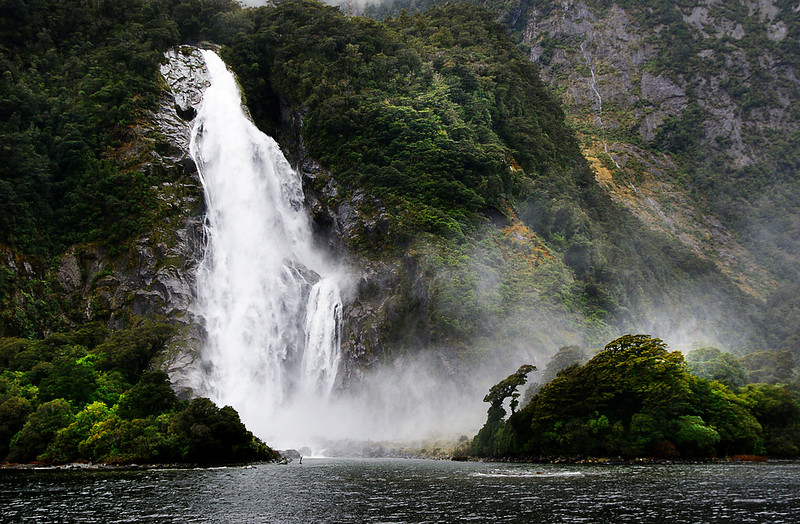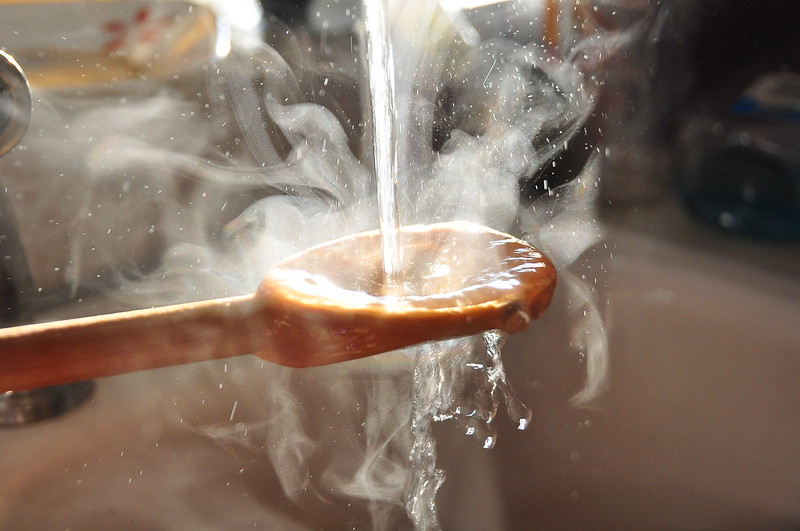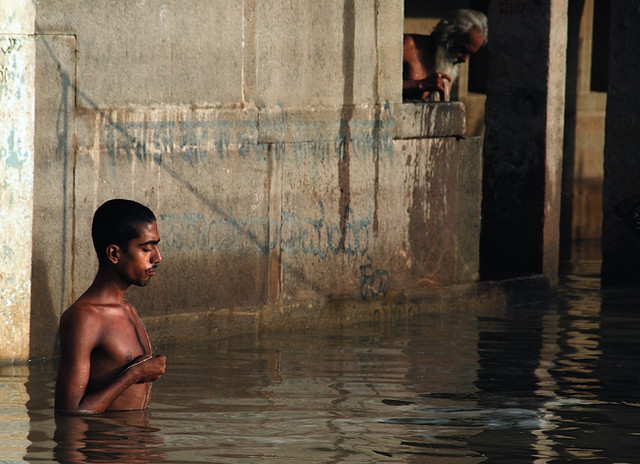There is a famous saying in ancient tamil siddha’s _”Andathilullathe Pindam Pindathilullathe Andam Andamum Pindamum Ondre Atharinthuthan Parkkumpothe”_ it means what is in universe is same in our body. That is, our body is made of 5 elements, so does the universe.
Our earth has ⅔ water, so does our body, particularly brain. Water plays an important role in our body, there are countless benefits. At the same time, everyone is unique, so their needs are different. So drinking water with reference to certain benchmark is wrong. You drink water when you feel the need and as per your environment.
We can not say water is just H2O. Water has various nutritional elements that can be validated with scientific tools, but those scientific tools can not find the life force or spiritual energy. Our ancestors were well aware of this, in fact they were able to document various sources of water and their benefits. Though all source has water, but their function and benefits are different. We have to use as per our needs.
Let’s see what are the sources our ancestors have documented. As you think water comes from cloud, and it is collected and cleaned and sent to us in tap. But the story goes deeper. It will open your eyes, and also you can educate children about water in depth.
- Agazhi (Moat) – A moat is a deep, broad trench, filled with water, that surrounds a castle for defence purposes. It has poisonous plants and deadly animals such as crocodile.
- Aruvi (WaterFalls) – a steep fall or flow of water in a watercourse from the highest part of a hill or a mountain. Each waterfalls has therapeutic benefits as per season.
- Aazhikinaru (Well in Sea Shore) – well dug near a sea shore. Good for stabilizing excess salt in air.
- Aaru (River) – Natural stream of water of fairly large size
- Elanji (Reservoir for drinking and other purposes) – a natural or artificial place where water is collected and stored for drinking and other purposes
- Urai kinaru (Ring well) – an excavation or structure in the form of descending rings created in the ground by digging to access groundwater. It is usually lined with fired clay.
- Ooruni (Drinking water tank) – Drinking water tank
- Ootru (spring) – water flow from an underground layer of water to the earth surface
- Aeri (Irrigation Tank) – water stored from rainfall, springs and rivers, used for agriculture
- Odai (Brook) – a small body of moving water from an underlying water body. It always flows through a channel
- Kattunginaru ( Built-in -well) – an excavation or structure created in the red soil ground by digging to access groundwater. It is usually lined with stones and bricks.
- Kadal (Sea) – Sea
- Kanmai/Kammai (Irrigation Tank) – alternative name for irrigation tank used in the pandya dynasty
- Kalingu (Sluice with many Venturis) – Water sources like irrigation tank, built with a strong stone wall(as a precaution to prevent it from overflowing), with a gate at its end for water flow.
- Kaal(Channel) – path of a narrow body of water
- Kaalvaai (Supply channel to a tank) – supply channel to the water resources like irrigation tank, bathing tank and drinking water tank
- Kuttam (Large Pond) – large pond (see the description of pond below)
- Kuttai( Small Pond) – a small and shallow body of standing water, either natural or artificial, that is usually smaller than a lake, used for bathing farm animals.
- Kundam (Small Pool) – a small water source for bathing.
- Kundu (Pool) – bathing water source, small in size
- Kumizhi (Rock cut Well/Artesian well) – An aquifer is a geologic layer of porous and permeable material such as sand and gravel, limestone, or sandstone, through which water flows and is stored. A well drilled into such an aquifer is called an artesian well.
- Kumizhi ootru (Artesian fountain) – If water reaches the ground surface under the natural pressure of the aquifer,it is called the artesian fountain.
- Kulam (Bathing Tank) – bathing water source near a village.
- Koovam (Abnormal well) – an abnormal well.
- Kooval (Hollow) – a shallow well like pit.
- Vaali (Stream) – a small drainage basin built from an overflowing natural water source like river
- Keni (Large Well) – a broad and deep well
- Sirai (Reservoir) – is an enlarged natural or artificial lake, storage pond or impoundment created using a dam or lock to store water.
- Sunai (Mountain Pool) – natural water source in the mountains.
- Sengai (Tank with DuckWeed) – Bathing tank with abundant duckweed.
- Thadam (Beautifully Constructed Bathing Tank) – Beautifully Constructed Bathing Tank
- Thalikulam (Tank Surrounding a Temple) – water source surrounding the temple similar to a moat
- Thaangal ( Irrigation Tank) – In Thondai Dynasty, (dynasty which got separated from chola dynasty), irrigation tank is called so.
- Thirukulam (Temple Tank) – a sacred bathing tank near a temple
- Theppakulam (Temple tank with inside pathway along parapet wall) – a big sized temple tank with a inside pathway along the parapet wall, where theppam (a kind of boat car for the deities of the temple) is run during a temple festival.
- Thodu Kinaru (Dig Well) – water obtained from time to time by digging sand in the river
- Nadai Keni (Large well with steps on one side) – A large well which has steps on one side
- Neeraavi (Bigger tank with center Mantapam) – a large tank with a center stage. It is also called as aavi.
- Pillaikinaru (Well in the middle of a tank) – well in the middle of a bathing/ irrigation tank
- Pongu Kinaru ( Well with Bubbling Spring) – Well which has a never drying bubbling spring.
- Poigai (Lake) – a natural water source where there are abundant lotus flowers.
- Madu (Deep place in a river) – a deep, dangerous pit in a river.
- Madai (Small sluice with single venturi) – a small water source controlled by a sluice gate with single opening which controls the water flow.
- Madhagu (Sluice with many venturis) – a large irrigation tank controlled at its head by sluice gate with many openings. Sluice gate is traditionally a wood or metal barrier sliding in grooves that are set in the sides of the waterway. Sluice gates commonly control water levels and flow rates
- Marukaal (Surplus water channel) – channel where the excess water is diverted.
- Valayam (Round tank) – Bathing tank which is round in shape.
- Vaaikaal (Small Water Course) – small water sources like irrigation tank/ channel
Each water was treated by the human, or by nature for specific purposes. It is astonished by our ancestors’ depth of knowledge and practice they integrated into our lives, which we forgot by globalization. It is high time we switch back to our roots to save our loved one.
HOT or COLD
Now let’s decode about the drinking water that is hot, warm or room temperature or cold. The answer is this, we just need to use common sense, here, like all living creatures, we should take water in room temperature. Since humans are enabled with 6th sense, we can enhance our body function by changing the water temperature as per our needs. In case of cold weather, we can consume warm water. Our stomach needs fire energy to digest the food. So warm water does enhance its function. But never take HOT water, it will kill the sense in tongue, and affect our lining of walls from mouth to stomach. So does the cold water also affect us. Cold water does the most damage in our body. It numbs the sense, affects our thought process, and extinguishes the fire in gut. So anything cold (milk shake, ice cream) is not good. Unless it is for a specific purpose and for a season as per body and environment.
If you are not convinced, take a pot with hot (hot and cooled later), cold, warm, room temp water. Put a seed or fish. You clearly see which water has a life. So do you want to drink water that has life or what looks good?
In case if you have a skin related problem or obesity or toxin in body regular warm water can help to flush the toxins. Regular water takes 6 hours to enter various channels in the body whereas herbal water does this job in 1.5 hours.
So boiled and cooled water does kill all the things in water including the life force, so it is of no use, rather it makes our body less immune. Check with people around who drink boiled water and normal water. You will find out the answers.
Research on Holy Water
During post world war times. Some German and Japanese scientist were sent all over the world to do research on various holy water bodies, such as ganga, natural springs, etc. in the end of their study they found, ionized alkaline water that has high PH value, and it is the reason for providing positive health, anticancer, and refrain from psychological problem. They could not find the spiritual value, probably they know and have hidden it for public eyes.
Now, those companies make special water treatment machines, that cost us few lakhs.
Human body is at 7.4 PH value. Anything less than 7 is acidic and more than 7 is alkaline, So don’t jump into conclusion that we only take alkaline food, in fact most of the food we eat is not alkaline, our body needs acidic value too. In small number. So the intake should be balanced with higher alkaline intake.
Few months back, I did a test with various waters (who sells those Japanese technologies) I found, something shocking. Few more friend did this with other source shared the result with me for our community.
- Normal tap water – 7 To 7.5
- Rain water – 7 to 8
- Mineral water – 4 to 5.5
- Soda and packed juice – 2.5 to 3.5
- Water from ganga and rameshwaram – 9.5 to 11.5
- Coconut milk – 7 to 8!!
- Milk – 4 To 5
No wonder, why temples give coconut water during visits, they were trying to increase PH value of the body. As said before, temples where holistic spiritual places never a religious ritual business centers like today. So drinking coconut milk daily does wonder in health. I have seen many parents including myself, observed sea level changes in health. Now, we know which water is safe.
Purifying the water
Somehow we have been brainwashed from birth that water is not safe, germs, bacteria, etc. I do agree that some germs and bacteria does deadly harm to us, but MNCs has exaggerated too high that they created a permanent fear in our mind to drink the water from normal source. What is the solution to get a good water without spending Rs.100000s of money. The answer lies in our traditional lifestyle practices.
Use herbs, Earth Pot, or Copper
Water stored in earthern pot for more than 12 hours in dark does wonders, it in fact increase PH value by 1 or 2 value more. Copper does the same in 4 hours. Pot reduce the body temperature, copper increases the body temperature. So use it as per season and your environment.
If you use, more physical work use pot, if you use more mental work then use pure copper.
To remove dust particles, harmful bacteria, use simple white organic cotton layers of clothes. This is a most simple cost-effective and efficient filter, the water that passes the cotton layers, it will capture the bacteria, I have not done research, could not find anyone doing test. But most of the naturopathy, ayurvedic and siddha dr agree to this.
Enhancing the water
 We can add a small piece of wood from guava or amla or drumstick seeds or vettiveru. Once those woods or seed smells bad, change it. No harm. Good for health.
We can add a small piece of wood from guava or amla or drumstick seeds or vettiveru. Once those woods or seed smells bad, change it. No harm. Good for health.
Read this blog by Vaijayanthi about various detox waters.
Conclusion
- Drink room temperature water or warm water as per your need
- Use copper and mud pot or go for an expensive machine. (nothing in between like RO, etc, it does weak our body in long run)
- Prefer tap water or save rain water an store in in dark place and use it.
Looking forward, we should work on areas to save rain water.






“We can add a small piece of wood from guava or amla or drumstick seeds or vettiveru”
In the above, we should add a small piece of wood from Guava plant/tree.
OR
Amla (not piece of wood but Amla)
OR
Drumstick Seeds
Is this correct?
Or is it wood piece of Amla tree or Guava tree or Drumstick seeds?
Just for confirmation before I start using these methods.
These are very helpful information though!!
first option
Extract summary from the article says “Use copper and mud pot or go for an expensive machine. (nothing in between like RO, etc, it does weak our body in long run)”
Q1: Since it has been our understanding in cities like Bangalore that the tap water is treated with harmful chemicals that are not good for health and also the storage tanks from which water is supplied is not clean and may have dead lizards rats and other insects which we never know, is it safe to consume the water by filtering through white cloth stored in mud pot or copper vessel? Or can we use RO filter or regular sedimentary filters (non-RO non-electric) and store it in mud pot or copper pot before consuming?
Q2: Even if we have to go for an expensive machine, is there any recommended company or brand that was evaluated or analyzed? Or is it better to go for such machines that costs in lakhs if one can afford? Because these costly machine converts water into alkaline using ionization process.
Q3: Please suggest the BEST option in case if one can afford. Costly alkalizer machine or tap water in mud pot or copper vessel. And if not costly machine can we use RO filtered water or regular filter water in mud pot or copper vessel. Or should we go for white cloth filtering and never use RO or regular filters?
A1. You can use Non-RO.
A2. Anything over doing will only harm in the longer term.
A3. Tap water, Mut Post or COpper Vessel. There is another process, we will explain it further
Thanks for the response, Velu. This is very valuable and useful information. Will wait for another process or method that you mentioned in your response.
Join our Whatsapp group
https://goo.gl/FpB9ob
Thanking everyone for working on this precious knowledge .
I have few more questions lime
Q. Doctors advice to drink warm water for constipation morning empty stomach and before doing to bed at night .
OMG ….im really shocked .
However I have few question like :
1. Can we give this water to infants and toddlers .
2. In holistic living they say “No RO water” but they do ask for boiling the water and then putting 4 cloves 4 tulsi leave and pure camphore a pinch .please throw some light on this .
1. Mother’s milk first feeds. till you see signs for teeth. why give water when you have mothere’s milk, god’s gift.
2. it is just for aroma and herbal benefits.